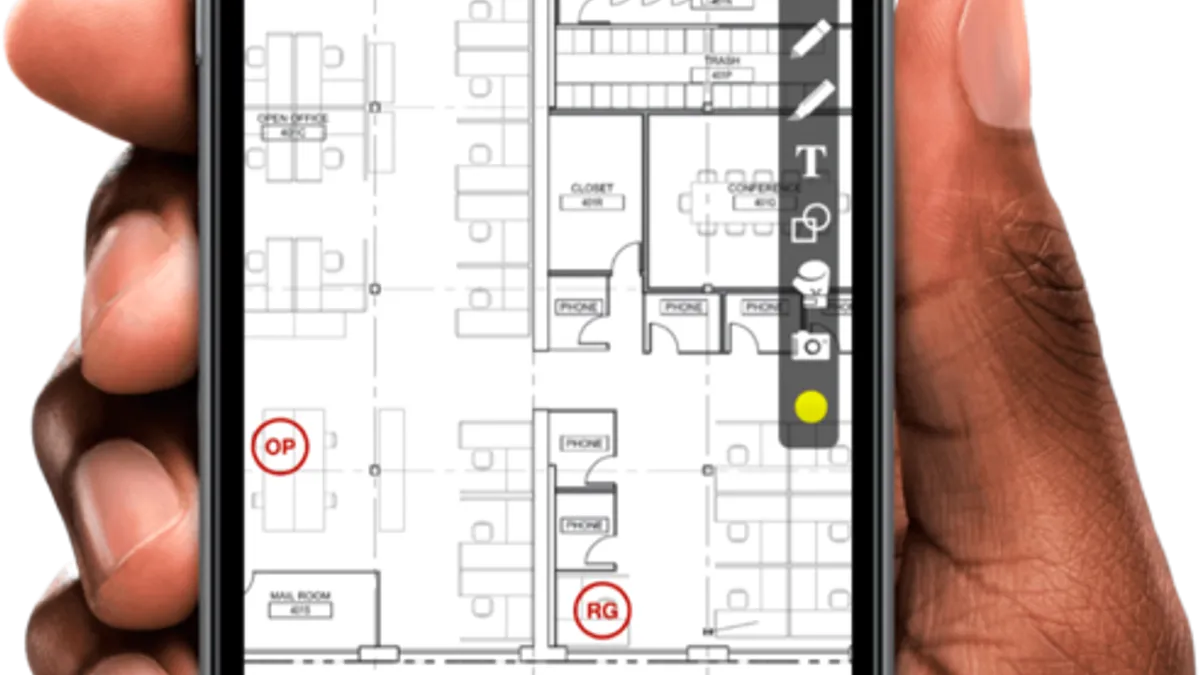Dive Brief:
- The Tennessee DOT has officially adopted the PlanGrid platform and will require prime contractors and designers doing business with the agency to use the construction productivity software on all projects beginning with the TDOT’s March 2019 contract awards. The PlanGrid requirement is not retroactive for projects already underway.
- The agency pointed to a wide range of benefits that using PlanGrid should provide, including the instantaneous syncing of data; efficient assigning and tracking of Requests for Information; the ability to overlay and compare different versions of plans; access to photos via georeferencing; the option to create and share markups; the ability to host a complete set of construction documents in one location; and a reduction in the use of paper plans. Transportation projects, in particular, will benefit from PlanGrid because the system allows for the assignment of GPS coordinates to specific drawing details — making it easier to locate the work in question — and creates the transparent, digital records required for government work.
- The TDOT began an initial rollout and testing in July 2018. "With PlanGrid,” said Lori Lange, the TDOT’s director of construction, "we’re decreasing miscommunication and the potential for rework, and ultimately setting the state’s infrastructure up for long-lasting success.”
Dive Insight:
While they made no mention of PlanGrid specifically, the Contra Costa (California) Transportation Authority is also making the transition to paperless operations by moving data to the cloud so that all parties to its transportation projects can more easily access it, Government Technology reported. This allows the agency to manage projects and inspections in real time and reduce its paper use by 70%.
Autodesk announced its $875 million acquisition of PlanGrid in November, allowing the former to achieve instant scale in a booming segment of the construction industry. Tracy Young, CEO and co-founder of PlanGrid, said at the time of the announcement that the two companies complement each other and are now poised to “completely change the construction landscape” through improved connectivity between design and construction. The integration of such Autodesk staples as Revit and BIM 360 with PlanGrid, the companies said, will allow for a more streamlined exchange of project information.
In December, PlanGrid unveiled PlanGrid Connect, a “hub” where users will be able to more easily integrate PlanGrid with at least 200 other applications, including those in the areas of customer relationship management (CRM), analytics, task management and document storage. A primary purpose of the hub is to help get rid of data and give users more control over how their apps work together.














